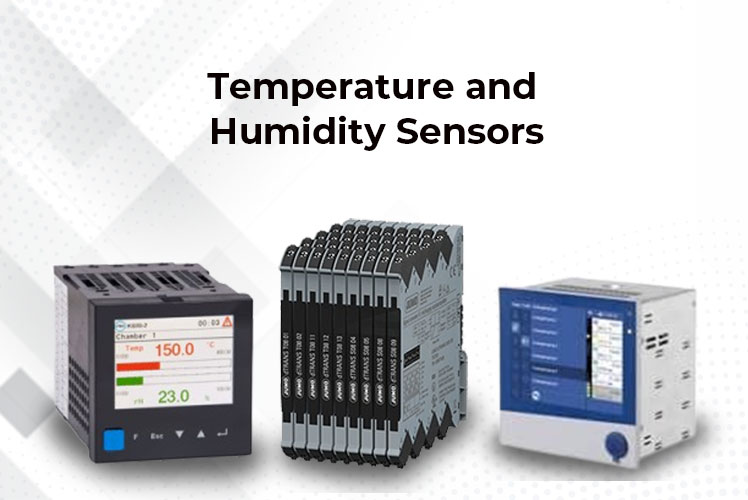Why Use Humidity Control Switches in Your Home

Strong 8k brings an ultra-HD IPTV experience to your living room and your pocket.
Some people are so particular about the temperature in their homes. They instantly turn on the AC when they feel hot and switch to a heater when they feel cold. But who is going to tell them that it’s the humidity that plays a significant role in our comfort levels?
That invisible moisture in the air makes a huge difference in how comfortable and healthy your home feels. So, it becomes necessary to treat this. That’s where humidity control switches come in, and trust me, they’re worth knowing about. If you are hearing about these switches for the first time, I am here to break it down for you.
The Importance of Humidity Control
Humidity is the amount of water vapor present in the air. If you usually feel sticky, or see mould somewhere inside the house, know that it is because of humidity. The worst? It can damage your walls and furniture.
However, if your skin dries out fast or you notice your wooden floors getting cracks, know that the amount of humidity is extremely less. You have to ensure 30% to 50% humidity — that’s where things feel comfy and healthy.
Benefits of Using Humidity Control Switches in Your Home
Bid Farewell to Mould & Mildew
No one likes seeing mould growing in their basement and bathroom. It looks weird, smells bad, and can make you fall ill. But these temperature control switches help keep moisture in check so mold doesn’t get a chance to settle in.
Feel Better, Live Better
Ever notice how dry air makes your skin itchy or your throat scratchy? Or how sticky air makes you sweat even when you’re just sitting? Keeping humidity balanced makes your home feel nicer and can even reduce allergies and asthma flare-ups.
Save Some Bucks on Energy Bills
When you combine humidity control switches with temperature control switches and temperature and humidity sensors, your heating and cooling systems get smarter. For example, a wifi temperature sensor can send real-time info to your thermostat, so it only works when it really needs to. That means less wasted energy and lower bills.
Control It All From Your Phone
So, are you a fan of smart home gadgets? Here is some good news for you – several humidity control switches come with wifi, making it easy for you to adjust your home’s humidity from anywhere.
Protect Your Stuff
Got wooden furniture, instruments, or electronics? These things hate extreme humidity. Using humidity control switches helps keep your prized possessions safe from warping, cracking, or rusting.
How Temperature and Humidity Sensors Work Together
While the humidity control switches solely focus on moisture, when they are combined with temperature control switches and temperature and humidity sensors they give you a complete picture of the indoor environment. These sensors constantly monitor both temperature and humidity, sending data to your home automation system.
Why Consider Wifi Temperature Sensors?
Wifi temperature sensors offer their own sets of perks, the major one still remains wireless monitoring and control. You can place them anywhere in your home and keep a track of temperature variations and wireless monitoring and control. With this flexibility you can ensure that your HVAC and humidity control systems respond accurately, improving comfort and efficiency.
Simple Steps to Get Started with Temperature and Humidity Control
If you’re ready to take control of your home’s climate with humidity control switches, wifi temperature sensors, and temperature and humidity sensors, here’s a straightforward plan to get going:
Assess Your Home’s Needs — Where’s the Trouble?
First things first: take a quick tour of your home and think about where humidity or temperature problems might be lurking. Basements, bathrooms, kitchens, and laundry rooms are usual suspects. Why? Because these areas often have higher moisture or uneven heating and cooling, which can lead to mold, musty smells, or cold spots.
Ask yourself:
- Do you notice condensation on windows or walls?
- Is there a damp smell in certain rooms?
- Are some rooms always colder or warmer than others?
Pinpointing these trouble zones helps you decide where to focus your humidity and temperature control efforts.
Choose the Right Devices — Match Your Home’s Setup
Now that you know where you need help, it’s time to pick the right tools. Look for humidity control switches that play nice with your existing HVAC system or smart home gadgets. The goal is to have devices that communicate smoothly with each other, like your wifi temperature sensors and smart hubs, so everything works in harmony.
Pro tip: Check if your devices support wireless control and automation. That way, you can set them once and let them do their thing without constant fiddling.
Install Temperature and Humidity Sensors
To really understand what’s going on in your home, place temperature and humidity sensors in key rooms. This isn’t just about one spot, conditions can vary a lot from room to room. Some sensors measure both temperature and humidity in one device, making it easier to keep track without clutter.
- Think about placing sensors in:
- The basement or attic
- Bathrooms and kitchens
- Bedrooms and living areas
This way, you get a clear, detailed view of your home’s climate.
Connect to Wifi and Set Up Remote Access
Here’s where it gets fun and convenient. Connect your sensors and switches to your home wifi network. This lets you monitor your home’s temperature and humidity right from your phone or tablet — whether you’re on the couch or miles away.
Program Your Devices — Set It and Forget It
Finally, set your comfort zones. Decide what humidity and temperature ranges feel best for you — for example, keeping humidity between 30% and 50%, and temperature around 22°C (72°F). Then program your devices to maintain those levels automatically.
Wrap-Up
Taking these simple steps puts you in the driver’s seat of your home’s comfort and health. With the right mix of humidity control switches, temperature control switches, wifi temperature sensors, and temperature and humidity sensors, your home will stay cozy, fresh, and protected — all with minimal effort on your part.
Note: IndiBlogHub features both user-submitted and editorial content. We do not verify third-party contributions. Read our Disclaimer and Privacy Policyfor details.


